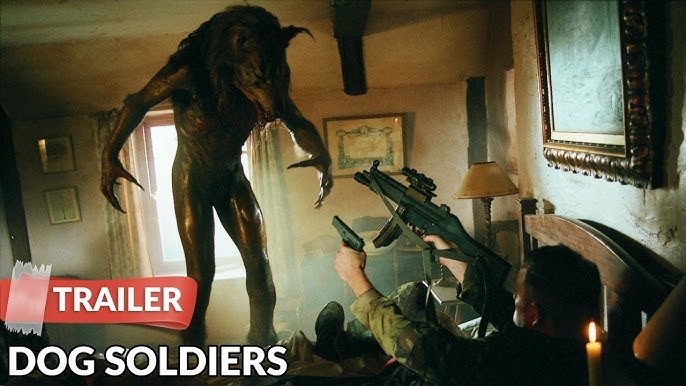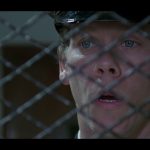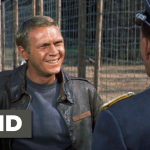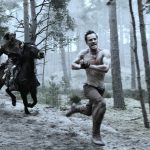Dog Soldiers (2002)

Dog Soldiers (2002), directed by Neil Marshall, stands as a distinctive entry in the horror genre, blending elements of military action with supernatural terror. This British film, renowned for its innovative approach to the werewolf genre and its focus on camaraderie amidst chaos, provides a fresh and gripping take on traditional horror conventions. Through its intense narrative, strong performances, and unique thematic elements, Dog Soldiers delivers a compelling and memorable cinematic experience.
The film is set in the Scottish Highlands and follows a group of British soldiers on a training exercise that quickly spirals into a fight for survival. The story begins with the squad, led by Sergeant Harry Wells (Sean Pertwee), embarking on a routine military exercise in a remote area. However, their mission takes a dark turn when they discover the remnants of a special forces unit that has been brutally attacked.
As night falls, the soldiers find themselves under siege by a pack of werewolves, leading to a harrowing struggle for survival. The tension escalates as the group is forced to rely on their military training and resourcefulness to combat the supernatural threat. The film explores themes of bravery, loyalty, and the resilience of the human spirit as the soldiers confront both the external danger of the werewolves and the internal conflicts within their ranks.
One of the central themes of Dog Soldiers is the concept of camaraderie under duress. The film portrays the soldiers’ bond as a vital source of strength in the face of overwhelming danger. Their shared experiences and mutual support become crucial as they face the terrifying threat of the werewolves. The depiction of their loyalty to one another highlights the importance of teamwork and solidarity in overcoming extreme challenges.
The film also explores the theme of heroism through its characters. The soldiers are portrayed as flawed yet heroic individuals who must rise to the occasion despite their fears and limitations. Sergeant Wells, in particular, embodies the qualities of leadership and bravery, guiding his team through the dire situation with both tactical acumen and personal sacrifice. The film’s portrayal of heroism is grounded in realism, emphasizing that true courage often emerges in the face of insurmountable odds.
Another significant theme is the clash between the mundane and the supernatural. Dog Soldiers juxtaposes the everyday world of military training with the horror of the supernatural. This contrast not only heightens the sense of dread but also underscores the characters’ disbelief and struggle to comprehend the reality of their situation. The blending of military and horror genres allows the film to explore the boundaries between the familiar and the unknown, creating a unique and engaging narrative.

Neil Marshall’s direction, combined with the film’s visual and technical elements, contributes to its success as a horror-thriller. The cinematography, by Sam McCurdy, effectively captures the bleak and foreboding atmosphere of the Scottish Highlands. The rugged landscape and remote setting enhance the sense of isolation and danger, making the soldiers’ predicament even more intense.
The film’s special effects and creature design are crucial to its impact. The werewolves are depicted with a mix of practical effects and CGI, creating a frightening and believable antagonist. The practical effects, including the use of prosthetics and animatronics, provide a tangible and visceral quality to the creatures, while the CGI enhances their agility and menace. The combination of these techniques contributes to the film’s overall sense of terror and authenticity.
The film’s sound design and score also play important roles in building suspense and creating a chilling atmosphere. The use of sound effects, such as the howling of the werewolves and the ambient noises of the forest, adds to the tension and immersion. The score, composed by Mark Thomas, complements the film’s tone with its intense and foreboding music, heightening the emotional impact of key scenes.

The performances in Dog Soldiers are notable for their authenticity and intensity. Sean Pertwee’s portrayal of Sergeant Wells brings depth and credibility to the character, capturing both the physical and emotional demands of his role. The supporting cast, including Kevin McKidd and Emma Cleasby, delivers strong performances that contribute to the film’s dynamic and engaging narrative. Their interactions and character development add layers of complexity to the story, making the soldiers’ struggle more compelling.
Dog Soldiers has been praised for its inventive approach to the werewolf genre and its successful integration of military and horror elements. The film’s blend of action, suspense, and supernatural terror distinguishes it from other horror films and showcases Neil Marshall’s talent for creating tense and original narratives. Its impact on the genre is marked by its ability to combine traditional horror with a fresh perspective, offering a thrilling and memorable experience for audiences.

In conclusion, Dog Soldiers (2002) is a standout film that effectively combines military action with supernatural horror to create a unique and gripping cinematic experience. Through its exploration of themes such as camaraderie, heroism, and the clash between the mundane and the supernatural, the film delivers a powerful and engaging narrative. With its strong performances, effective visual and technical elements, and innovative approach to the genre, Dog Soldiers remains a noteworthy contribution to the world of horror cinema.










